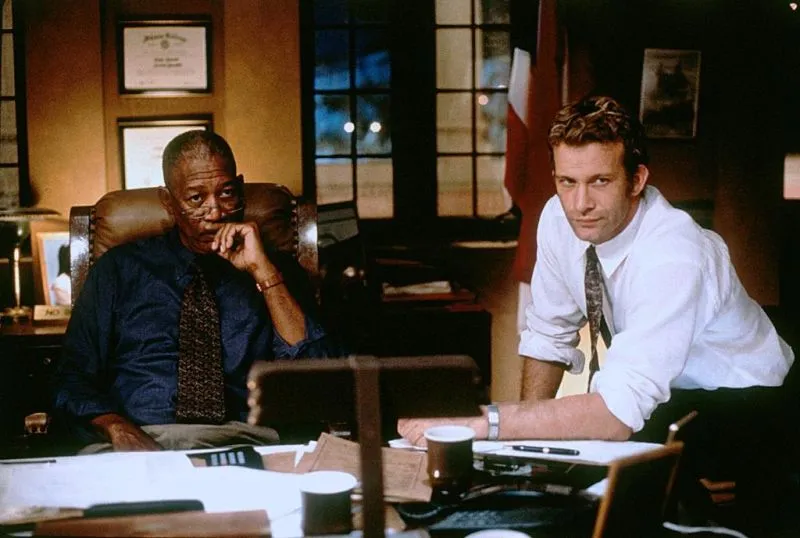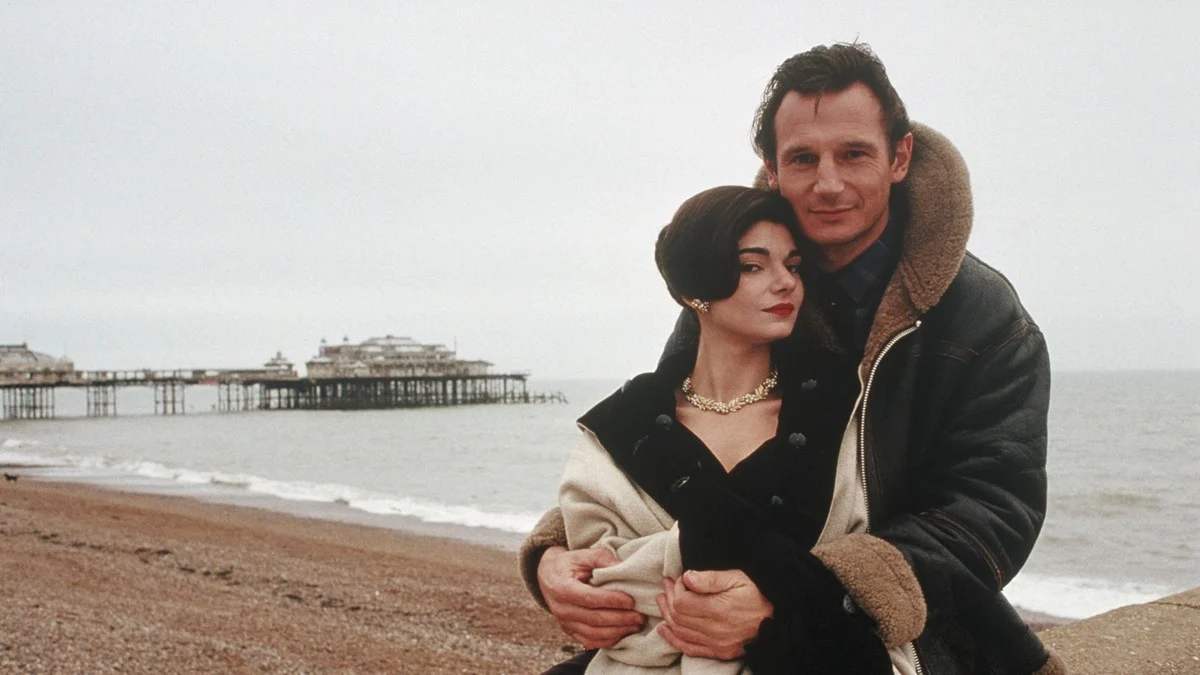Within the complex landscape of crime thrillers, ‘Under Suspicion’ shines as a narrative that enthralls audiences unlike any other.
With its intricate plot and masterful storytelling, this cinematic gem plunges viewers into a world where nothing is as it seems, and every revelation peels back another layer of deception.
At its heart lies a murder investigation, where the lines between guilt and innocence blur, and the truth proves to be a elusive quarry.
Unmasking the Truth: Henry’s Dilemma
Henry Hearst, portrayed with haunting nuance, finds himself ensnared in a web of suspicion. As he embarks on what he believes to be a routine visit to the police station, little does he know that his life is about to unravel before his eyes.
What begins as a simple inquiry swiftly escalates into a harrowing interrogation, where every word, every gesture, is scrutinized under the unforgiving gaze of the law.
From the outset, the audience is thrust into a captivating cat-and-mouse game, where Henry’s innocence hangs in precarious balance. The tension is palpable as he navigates a minefield of accusations and insinuations, desperately clinging to his crumbling facade of respectability. Yet, as the interrogation unfolds, cracks begin to appear in Henry’s armor, revealing a troubled soul tormented by secrets and lies.
The Interrogation: Truth or Deception?
One of the film’s greatest triumphs lies in its masterful manipulation of audience perception. Director Victor expertly navigates the murky waters of interrogation, skillfully oscillating between exonerating Henry and casting doubt upon his claims. With each revelation, the audience is left questioning the reliability of both Henry’s assertions and the judgment of the seasoned investigator, Victor.
The interrogation scenes serve as a psychological battleground, where truth and deception engage in a deadly dance. Henry’s carefully constructed facade begins to crumble under the relentless scrutiny, exposing the raw humanity beneath. Yet, amidst the mounting evidence, a lingering doubt persists: is Henry truly capable of murder, or merely a pawn in a larger game?
A Portrait of Deception: Unraveling Henry’s Persona
As the investigation deepens, Henry’s veneer of respectability gradually erodes, revealing a man haunted by his own demons.
His clandestine liaisons and morally dubious behavior paint a damning portrait, reinforcing suspicions of his guilt. Yet, amidst the mounting evidence, a glimmer of doubt remains, a flicker of hope that perhaps Henry is not the monster he is made out to be.
The film skillfully navigates the complexities of human nature, presenting Henry as a flawed yet sympathetic figure. His inner turmoil is palpable, his desperation tangible as he struggles to maintain his innocence in the face of mounting adversity.
And yet, as the walls close in around him, Henry finds himself teetering on the brink of despair, unsure if he will ever escape the shadow of suspicion.
The Twists and Turns: A Shocking Revelation
Just when it seems that all hope is lost, a startling twist unravels the meticulously constructed narrative.
The revelation of a subsequent murder exposes the fallacy of assumptions, shattering preconceived notions and implicating an unforeseen perpetrator. In a poignant denouement, the true extent of Henry’s innocence is laid bare, leaving both characters and audience reeling in disbelief.
The film’s climax is a masterclass in suspense, as the tension reaches a fever pitch and the truth finally comes to light. Yet, amidst the chaos and confusion, a sense of catharsis washes over the audience, as justice is served and the guilty are brought to account. And as the credits roll, we are left to ponder the timeless question: in a world shrouded in darkness, where can we find the light of truth?
Reevaluating Morality: Lessons from ‘Under Suspicion’

The Complexity of Guilt and Innocence
‘Under Suspicion’ challenges conventional notions of guilt and innocence, prompting reflection on the fallibility of judgment. Henry’s ordeal serves as a cautionary tale, highlighting the dangers of succumbing to bias and preconceived notions in the pursuit of justice.
The Human Cost of Suspicion
Amidst the intricacies of the investigation, ‘Under Suspicion’ underscores the human toll of suspicion and mistrust. Henry and Chantal’s fractured relationship serves as a poignant reminder of the collateral damage wrought by misplaced accusations and unchecked suspicion.
A Revelation of Failures: The Pitfalls of Assumption
Ultimately, the narrative arc of ‘Under Suspicion’ lays bare the inherent flaws of assumption and presumption within the criminal justice system. Victor’s misplaced certainty and tunnel vision serve as cautionary reminders of the dangers of confirmation bias and the imperative of objective inquiry.
The Aftermath: Reflections on ‘Under Suspicion’
A Tale of Redemption and Reconciliation
As the dust settles, ‘Under Suspicion’ offers a glimmer of redemption amidst the wreckage. Chantal’s remorse and Henry’s disillusionment serve as catalysts for introspection and reconciliation, albeit against a backdrop of irreparable damage.
A Cautionary Tale
Ultimately, ‘Under Suspicion’ stands as a cautionary tale, urging viewers to interrogate their own assumptions and prejudices. In a world fraught with uncertainty, the pursuit of truth demands vigilance, empathy, and an unwavering commitment to justice.

